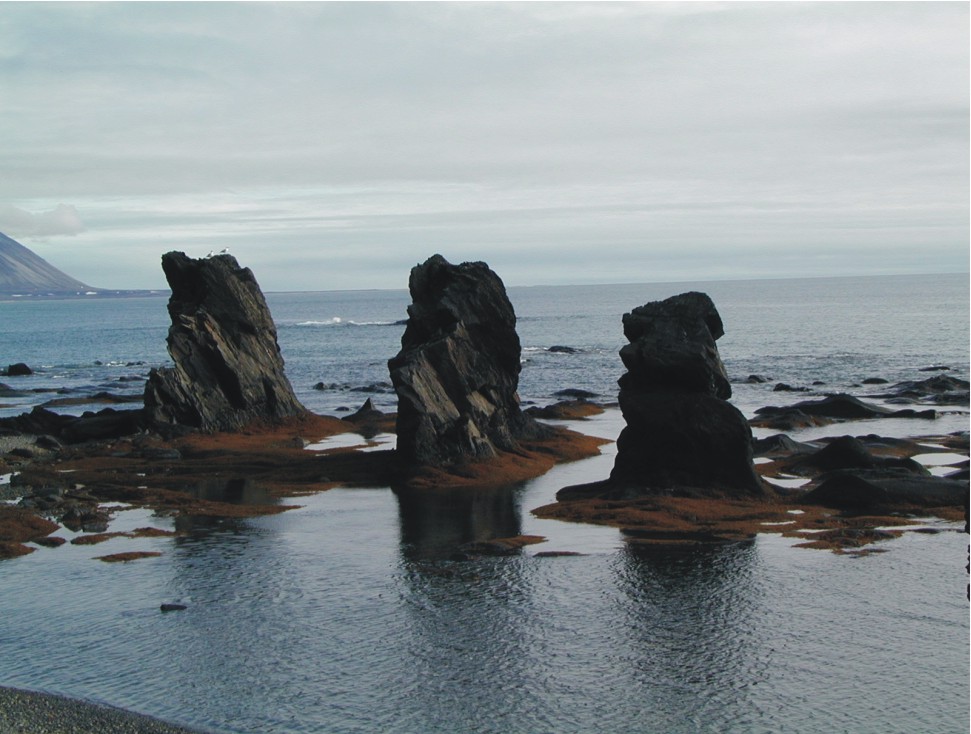Extensive description of site:
Hornsund is an medium size fjord (30km length, 12-15km wide) with a maximum depth of 260m, and weak sill in the entrance. Tidal glaciers form large part of the inner fjord basin coastline. The Fjord is heavily influenced by the cold Sorkapp Current carrying Arctic waters from the eastern part of the Svalbard archipelago while occasional intrusions of Atlantic waters are observed from the West Spitsbergen Current (arm of North Atlantic Current) carrying relatively warm waters. Hornsund, the southernmost of the Spitsbergen fjords, is the only Arctic fjord with relatively easy access. Other accessible fjords on the western coast are under strong Atlantic water influence, while the Hornsund fauna is of more Arctic character when compared to adjacent areas. It gives a unique opportunity to study the moving border between two contrasting zoogeographical provinces (Subarctic and Arctic). Habitat diversity within the fjord is high, and many sites have a complex array of habitat types in a small area. Wave exposure varies from extremely exposed to very sheltered, often within a short distance. All habitats within the region of Svalbard are present. | Habitats present:
| | Mud | Sand | Rock |
| Littoral | X | X | X |
| Sublittoral | X | X | X |
| Seagrass beds | |
|
Description of fauna and flora:
The biota has a number of special features. Several species from boreal Europe and the High Arctic are found here and nowhere else on Svalbard. The Hornsund marine fauna and flora has received sporadic attention from amateur and professional collectors and recorders over the past century and a half. From the potential pool of some 2500 marine macroscopic species of Svalbard, at least 600 have been noted in Hornsund. Inventories of many components of the biota have been published, most of them in a dedicated series of “Atlases of southern Spitsbergen marine fauna and flora”: these include Diatoms, Macroalgae, Cnidaria, Digenea, parasitic Nematoda and Cestoda, Polychaeta, Crustacea (Malacostraca, Copepoda: Calanoida), Mollusca, Bryozoa, Echinodermata, Ascidiacea and Chordata. In addition, there are around 50 other publications relating specifically to the biodiversity or natural environment of Hornsund. The longest formal time series data are for zooplankton (every year from 1988 to the present, averaging 50 samples per year). |
Human impact:
There is no industrial pollution, fishing or dredging. Within the Polish Polar Station (current population of 12) there is biological filtering system that treats all the waste water produced at the station. All solid garbage is stored in metal drums and taken away during re-supply operations in June each year. Approximately 10 cruise ships and occasional research vessels arrive to Hornsund each year. |
Facilities:
Polish Polar Station in Hornsund is the only permanently inhabited site in the area, originally established in 1957 as a research station under protection of the Governor of Svalbard for some 15 persons. The Polish Academy of Sciences who owns the facilities expanded them to host summer groups up to 15 persons and 10 members of the wintering, whole year team. There is a basic wet laboratory especially designated for biodiversity work. The fjord is accessible by ship in the ice-free season and by snow scooters or helicopter year round. A number of local boats (in the neighboring capital settlement Longyearbyen) are capable of all normal requirements for biodiversity work may be hired for working in the fjord and offshore. The distance from the fjord to the nearest regular airport and operational laboratory facilities (Longyearbyen and its University) is about 200 km. |
Available database and website:
Records of marine species are stored in EXCEL at the Institute of Oceanology Polish Academy of Sciences. This includes data on abundance, habitat type, collectors names, dates etc.
Information on the Polish Polar Station is available at http://hornsund.igf.edu.pl, and marine biological data on www.iopan.gda.pl . |
Links:
|
Commitment and ongoing research:
Hornsund is the major focus for the Polish Arctic National Research Programme. Several marine scientists from a Consortium of Polish Marine Research Institutes spend a significant proportion of their time on the biodiversity- related research. In addition there are numerous Norwegian, British, US and German scientists undertaking marine biological work in the area.
The Institute of Geophysics Polish Academy of Sciences together with a Consortium of Polish Marine Research Institutes and Norwegian partners (NP and AKVAPLAN) has an agreed science plan and specifically allocated budget for biodiversity work in the Hornsund fjord. |
Involvements:
|




